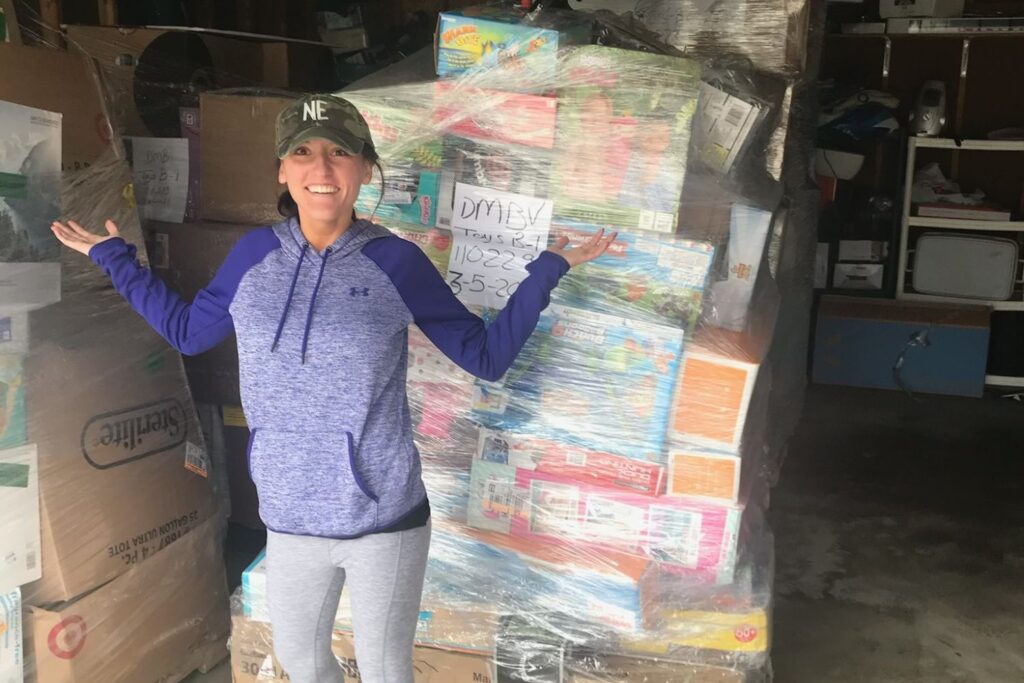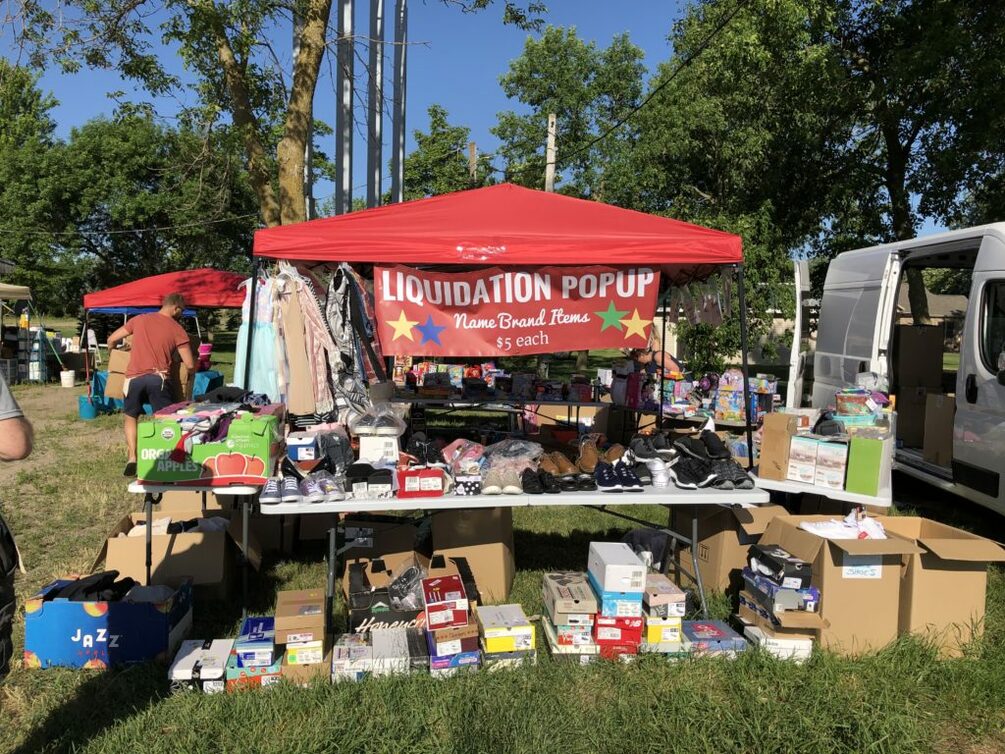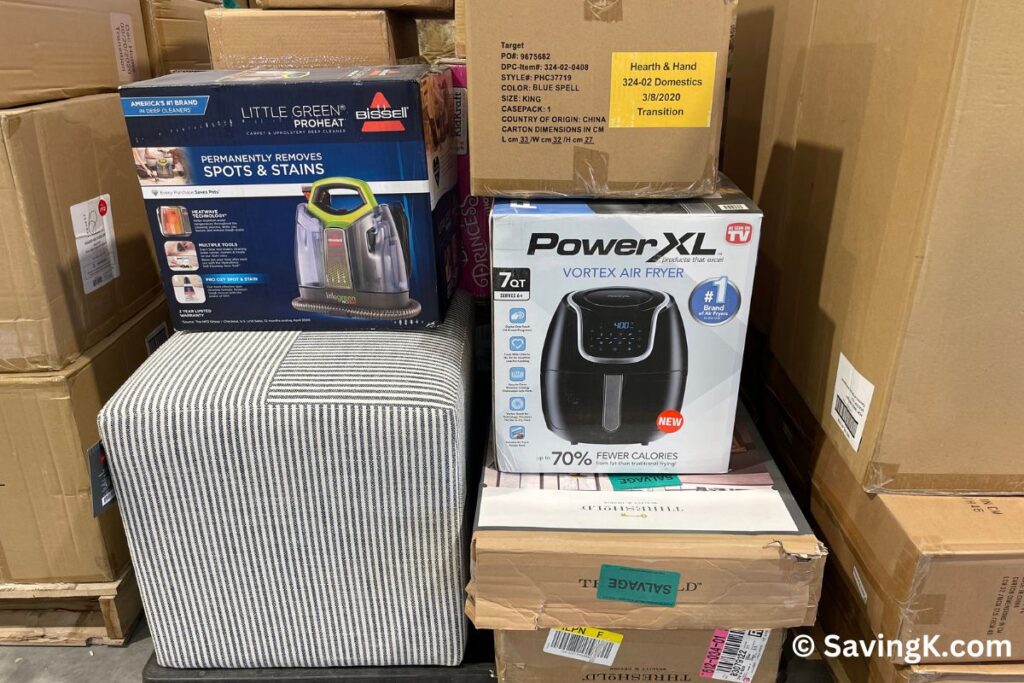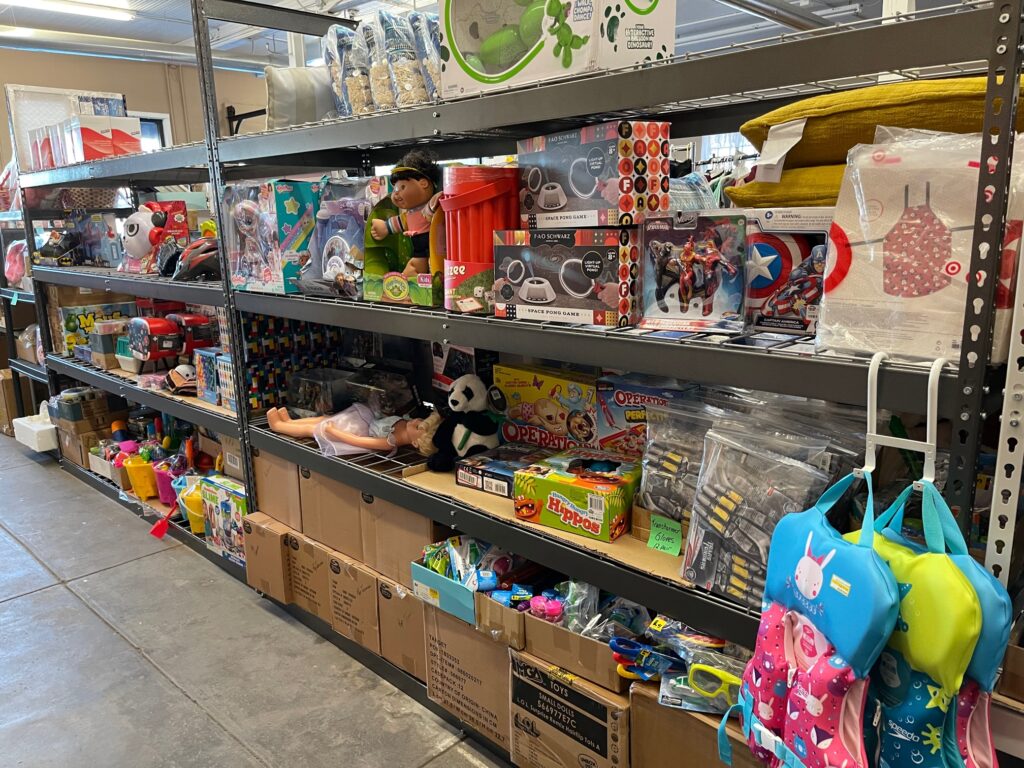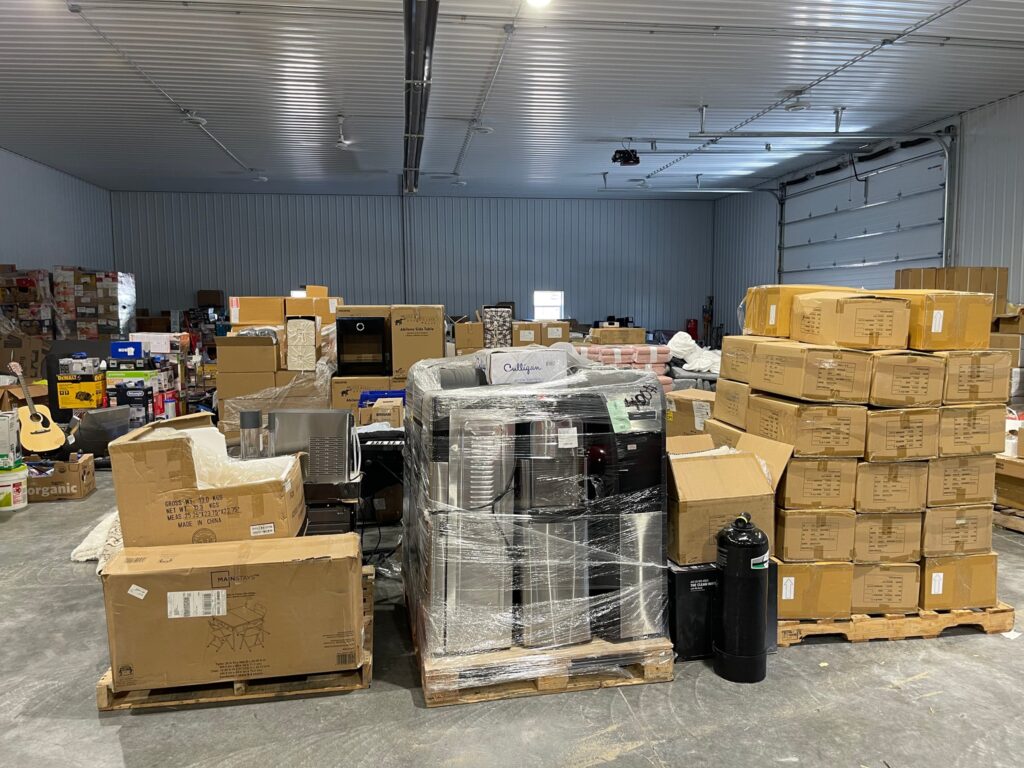
According to Business Insider, 8 out of 10 shoppers in the US are Target customers making Target one of the biggest retail companies in the United States. If you’re looking for an amazing deal on overstock, seasonal and returned Target merchandise to resell, you’ll want to consider buying Target liquidation pallets. These pallets can be found online and contain a variety of different items from Target stores. But before we get to exactly where you can buy Target liquidation pallets, let’s go over some basics you need to know.
What is Target Liquidation?
Target liquidation is merchandise from Target stores that are overstock items, seasonal items, expired items, damaged items, and/or returned items. These items come from every department that Target stores have from clothing to health and beauty, and from toys to electronics.
Many resellers buy Target liquidation with the hope to make money by reselling the items for more money than they paid for the items. These resellers sell these goods online via marketplaces or in person at Target salvage stores.
I have been an Amazon FBA seller for six years starting with retail and online arbitrage. I did a lot of research on liquidation for a couple of years before actually biting the bullet and ordering my first pallet in 2020. Luckily for you, I’m going to share my research with you to save you some hassle.
Getting Started
Before you actually purchase any Target liquidation pallets, you must get all your ducks in a row by learning some liquidation terminology, getting a resale certificate, and making such you have adequate space available.
Liquidation Glossary of Terms
First, before buying any liquidation items, you need to learn the lingo so when you looking at pallets to buy, you will know what the terms and abbreviations stand for.
- BOL = Bill of Lading (this is the document that seller gives the shipper that has the detailers about the merchandise being shipped)
- Broker = A middle man/men (usually it’s plural) between Target and the buyer
- Casepack – Multiple units of one specific product
- Cherry Picking = when a middle man takes out the best items and sometimes repackages the pallets (most brokers won’t admit they do this)
- DC = Direct Contract (these are brokers that have direct relationships with Target, so there are less middlemen; you cannot buy liquidation pallets directly from Target as Target does not sell liquidation pallets themselves)
- FTL = Full Truckload (this is when the shipment will take up all or most of the space in a shipping truck)
- LTL = Less Than Truckload (this is when freight is handled by a shipping service such as a logistics company or national parcel service that handles small loads of freight)
- Manifest = Formal Written Inventory (this lists all of the merchandise in the pallet or order)
- MAP = Minimum Advertised Price (this is the lowest price that a reseller can advertise a product for sale)
- MSRP = Manufacturer’s Suggest Retail Price (this is the price that the manufacturer recommends that the price be sold for)
- TGT = Target (many brokers cannot legally say their pallets are Target merchandise, so they use this abbreviation)
- TPR = Temporary Price Reduction
- Unmanifested = There is no indication of what merchandise is included, so it’s a surprise!
- UPC = Universal Product Code (you can scan or search this number via various apps to see what the going selling price is)
More terminology for product conditions and packaging conditions are covered later on in this article.
Resale Certificates
Most, if not all, liquidation companies require that you submit a resale certificate with your sales tax number before you can purchase Target liquidation pallets.
What is a Resale Certificate?
A resale certificate is a document that allows businesses if you are a to purchase merchandise without paying sales tax. The certificate is issued by the state where the business is located and it must be presented to the seller at the time of purchase. Businesses that have a resale certificate are not exempt from paying taxes, but they can avoid paying taxes on merchandise that will be resold.
Then when businesses resell merchandise, they charge their customers sales tax, which they then remit to the state. This type of system ensures that businesses only pay taxes on net profits and not on the gross sales of merchandise. Resale certificates are commonly used by businesses such as retailers, wholesalers, and manufacturers. These types of businesses usually purchase large quantities of merchandise and need a way to avoid paying taxes on those purchases. In some cases, businesses may use resale certificates to purchase equipment or supplies that will be used in the production of their products.
Where Do I Get A Resale Certificate?
Remember, it’s the buyer’s responsibility to fully research and comply with federal and state laws. For more information on resale certificates, we recommend checking out your individual state’s Department of Revenue website. They usually have clear instructions on how to acquire a sales tax number for your area.
Make Sure You Have Enough Space
You will need to determine if you have the space to adequately accommodate liquidation pallets. The standard size of a pallet is 48″ x 40″ and vary in height depending on how the goods are packed. A “gaylord” is a giant box fits the dimensions of a pallet. Gaylords allows for the shipment of various large items in a single container such as soft goods (i.e., items unlikely to break), apparel, bedding and smaller merchandise. Alternatively, “stacked and wrapped” refers to hard goods or larger boxed items being assembled on the pallet–think furniture pieces, small appliances or sporting equipment.
I had my first liquidation pallets delivered to my house and stored them in my garage. Some of the pallets were taller than my garage door opening, so we had to remove the top boxes to allow the pallet to fit through the garage door opening.
Things To Consider
There are also a few things you need to consider when buying liquidation pallets. I’m not by any means trying to talk you out of purchasing; I just want you to be prepared for the unexpected.
Read Descriptions
When I bought my first pallets, I didn’t bother reading what the product conditions or packing conditions were, and I ended up with some absolute junk that went straight in the trash. I had so much trash that my garbage company charged me extra that month! So please familiarize yourself with the following product and packing conditions before actually purchasing.
Liquidation Product Conditions
- New Condition – Unsold merchandise.
- Like New Condition – Unsold merchandise but may contain open or damaged boxes.
- Refurbished – Merchandise repaired to be fully functional but may have signs of wear.
- Used – Good Condition – Merchandise with signs of use but is sellable.
- Used – Fair Condition – Merchandise with heavy signs of use and may need repairs.
- Salvage Condition – Merchandise requiring significant repairs prior to resale.
- Mixed Condition – Can include products of any of the above qualities.
Liquidation Packing Conditions
- Original – Sealed, unopened packaging that may show signs of aging or contain clearance stickers showing markdown prices.
- Open Box – Original packaging that has been opened or unsealed that may show signs of aging or contain clearance stickers showing markdown prices.
- No Packaging – Loose items that are not in original retail packaging.
- Damaged – Original packaging that is significantly blemished or flawed.
- Non-Original – Items have been repackaged into generic packaging such plain cardboard boxes, poly bags, or protective packaging.
- Mixed – Packaging may range from original retail packaging to damaged or even missing packaging.
- Security Tags Included – Some items will still have security tags intact. We use this gadget to remove security tags from items, mostly clothing and electronics.
Buying Pallets Locally
Some liquidation stores and salvage stores, and even some bin stores, will sell full pallets to the general public in addition to their storefronts, so you may want to check them out and ask to speak to the manager or owner if you don’t see any for sale. This would save you exorbitant shipping fees (which we will cover next) if you have a pickup or trailer or can borrow one. I’ve even seen people with crossover cars buy pallets at a bin store, and then break the pallets down right then and there at the store to get everything to fit into their vehicle.
I must warn you though that a good majority of these pallet for sale will have been cherry-picked beforehand. And if they are under $500 per pallet, there’s also a good chance they are Amazon salvage which is not as high of quality as Target merchandise. Even Walmart salvage is higher quality than Amazon.
Therefore, I recommend you do your due diligence and ask where the pallets are from and the condition of the items before buying so that you are not disappointed. And be prepared to pay over $500 per pallet for good quality merchandise.
Shipping Costs
With the soaring gas prices, it is not cheap to have pallets delivered. I always figure the cost of shipping into the equation when I’m calculating the price per item paid (if the order is manifested). When looking at pallets to buy, I suggest looking for the nearest liquidation warehouse outlets to your location to pay the least amount of shipping. Since I live in the boondocks, I sometimes pay more for shipping than the pallets themselves!
Some brokers and companies will let you set up your own shipping, so if that’s the case, and you know someone with a “dry van” (a semi-trailer that’s fully enclosed to protect your shipments from the outside elements), you can ask them for a quote. Or I simply use FreightQuote.com that instantly compares prices from various shipping companies. You will need to know the following information to get a shipping quote:
- Requested loading date
- Origin (where to pick up your pallets)
- Destination (your location)
- Special services needed (such as residential and/or lift gate which we cover next)
- Item description (I always just put “liquidation”)
- Packaging type – a standard pallet is 48″x40″, and if you don’t know height or weight, you can estimate (I use 5′ tall and 500 lbs as my guesstimate); if you are way off, they will charge you overage at the end.
Residential Delivery Costs
When having pallets delivered to residential areas, you need to pay an extra “residential fee” which usually costs around $90. And if you don’t have a fork lift (most residences do not), you’ll have to pay another fee for a “lift gate” which runs anywhere from $40-$60. Technically, the truck driver is only getting paid to deliver the pallet off the truck, so if you don’t own a pallet jack, you’ll have to unload the pallet manually (and hope it’s not raining or snowing outside)! Most truck drivers will move the pallets to where you would like them, but I always tipped them or gave them a free item for doing so as that isn’t part of their job. Then again, if you don’t have a pallet jack, that pallet is staying put until you manually unload it.
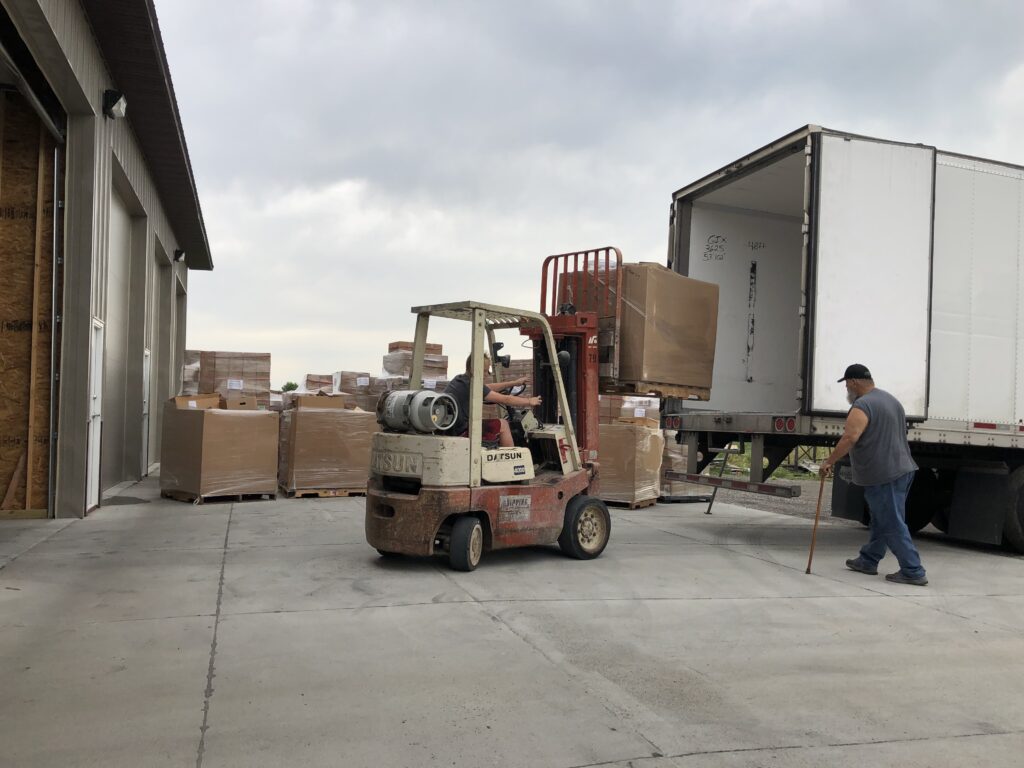
Payments Accepted
The majority of brokers and online liquidators only accept bank wires as a form of payment. This is due to the fact that it is difficult to chargeback a wire. If credit cards were accepted, too many scammers would dispute the charge saying the merchandise was not as described.
Some places will allow credit cards under a certain threshold amount (i.e. $1000) or after you’ve established relationship, but then may even charge you a surcharge (i.e. 3%) to cover their credit card fees. I do know one broker that offers a “buy now, pay later” option through a financing provider.
So, make sure your bank is able to send wires. My small local bank is able to send wires, but it’s kind of a hassle for me, as I first have to contact them. I can call them, but then I’m afraid I will transpose a number, and there a lot of numbers you need to send a wire. Therefore I usually prefer to email them so I can copy and paste the numbers, but then they don’t always check their email right away and may not read it until after the cut-off time for the day (i.e. 2:30 pm). Then they call me back to verify everything and ask for my PIN number which I seem to forget every time.
Even though it only cost $15 to send a wire through my local bank, I prefer to save the hassle and pay $25 to send a wire through Chase as I can request to send a wire online, and it’s sent instantly. Or if it’s after-hours, I can submit, and it’ll be sent immediately in the morning. Plus Chase offers a bank bonus for opening an account, so it was win-win for me.
There was one time that I tried to send a wire, and instead of a confirmation message, I got a pending message. I then got a call from Chase bank asking me a ton of questions about the wire like did I personally know the person I was sending money to (no), have I ever done business with them (no), do I know anyone that has done business with them (no), do I know that wires are final and cannot be retracted (yes), etc. Finally, I asked why they are asking so many questions, and they said that the account that I was trying to send to had been reported for being fraudulent. Immediately, I told them to cancel the transaction!
I think being a Midwesterner makes me more trusting of people when I shouldn’t be. The person I was supposedly going to buy the Target pallets from supposedly only lived 4 hours away from me in the neighboring state. I’m obviously also gullible thinking another Midwestern wouldn’t be a scammer!
How To Send A Bank Wire
Sending a bank wire is a way to transfer money from one bank account to another. Bank wires can be sent domestically or internationally, and are a safe and secure way to send money.
When you send a bank wire, you’ll need to provide the recipient’s name, address, and bank account number. You’ll also need to know the recipient’s bank routing number. To send a bank wire, you’ll need to go to your bank’s website (or call/email a local bank that doesn’t have the capabilities to do it online) and request a wire transfer. You can also do this by visiting your local bank branch (which is what I did the very first time).
Once you’ve submitted the request, the money will be transferred from your account to the recipient’s account within the same business day if requested in time. If not, it will be sent the next business day.
Liquidation Auctions
Brokers will usually have a set price for pallets and prefer to sell by the truckload. So if you are only looking to buy one or a even few liquidation pallets from Target, your best bet is buy from an liquidation auction site. We promise to tell you the exact auction of where we buy Target liquidation pallets in the next section.
Here are some things to keep in mine when bidding on Target liquidation auctions:
- Most auctions have a reserve price, which is the minimum amount that the seller is willing to sell the pallets for. If your bid is below the reserve price, you won’t be able to purchase the pallets.
- Auction items are sold as-is, which means that you won’t be able to return them if you’re not satisfied with what you receive. Make sure to inspect the photos, manifests, and descriptions of the items carefully, if available, before placing a bid.
- Be aware of shipping costs. Target liquidation pallets can be very heavy, so shipping costs can be significant. You’ll need to factor shipping costs into your bid amount to make sure you’re still getting a good deal on the pallets.
- Bidding on auctions can become competitive and addicting, so make sure you know how much you’re willing to spend before you start bidding. It’s easy to get caught up in the excitement and end up spending more than you intended.
- Double check your bid amount before clicking the submit button. One time I meant to bid a maximum of $400 for a pallet, but I mistakenly put an extra zero in and bid $4000! I ended up winning the bid for $2000 which was $1600 more than I wanted to spend.
Where & When To Buy
Okay, so you think you are now ready to buy a Target liquidation pallet or two?
I bought my very first Target pallets from B-Stock liquidation auctions. And I still buy from them today. They have a direct contact with Target and do not cherry pick the loads. I scope the auctions out every week day and bid on pallets of items that are of interest to me. I will download the manifests (if available) and calculate out how much money I think I can make.
I find that prices on pallets seem to go higher on Mondays and Fridays with more people bidding. My analogy is that since there are no auctions on the weekends, people want to get an order in before the weekend starts and right away when Monday rolls around. Thus, I prefer to pay more attention to liquidation auctions on Tuesdays, Wednesdays, and Thursdays.
For a list of more places to buy Target liquidation pallets and a crash course on how to flip pallets for profit, enter your email address below for a free liquidation guide with our compliments.
Conclusion
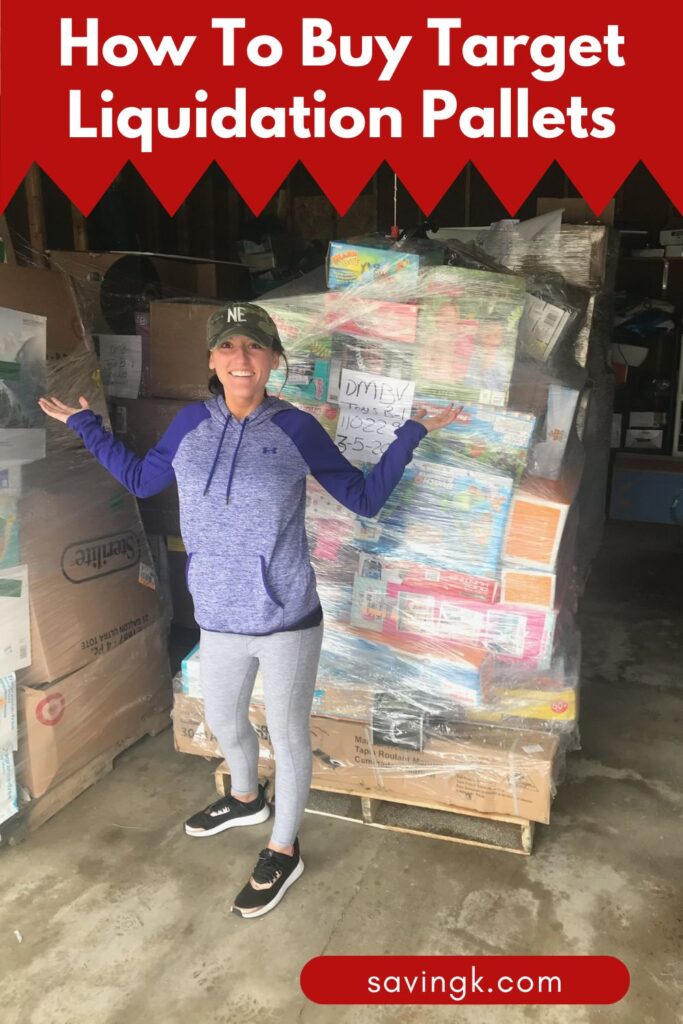
Target liquidation pallets are a great way to get inventory to resell (or if you like surprises). You can find them at auction sites, brokerages, and online retailers. When you’re bidding on Target liquidation auctions, make sure to inspect the photos, manifests, and descriptions of the items carefully, if available. Be aware of shipping costs, as shipping liquidation pallets can be very expensive. And finally, if bidding on a liquidation auction, double check your bid amount before clicking the submit button! With these tips in mind, you’re sure to find the perfect Target liquidation pallet for your needs.
- Praying To Saint Anthony For Lost Items - February 6, 2025
- How To File Your 2024 Income Taxes Online For Free In 2025 - January 20, 2025
- How To Win Sweepstakes and Contests - December 7, 2024
